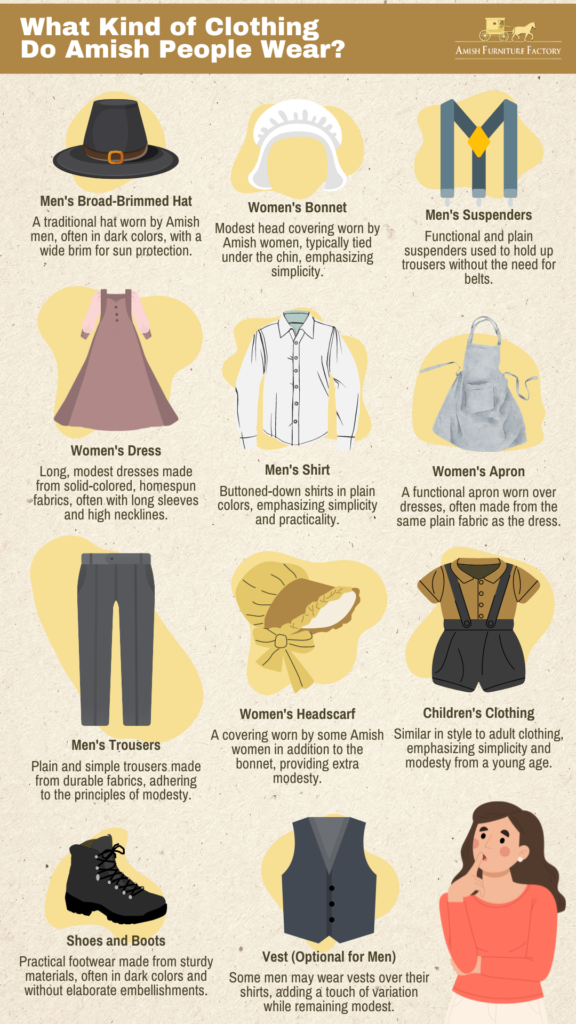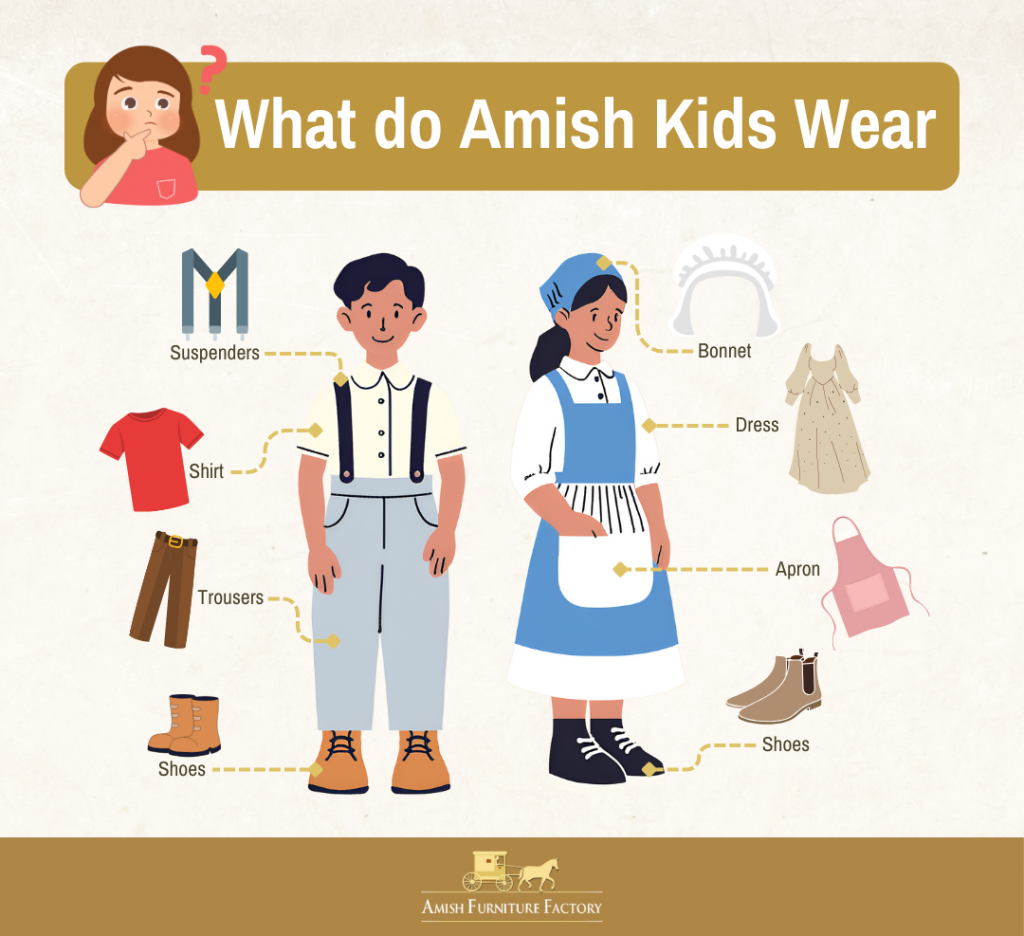
Clothing has already been an essential part of our lives since ages ago. What and how we wear says everything about us – our lifestyle, personality, beliefs, and attitude. How about the clothing worn by the “Plain People”? In this article, we’ll take a deep dive into everything about Amish fashion and clothing attire.
Amish clothing emphasizes functionality rather than uniqueness. One can easily distinguish the Amish by their solid-colored garments, fastened shirts with traditional buttons, long sleeves, full skirts, capes, hats, and suspenders. The Amish fashion symbolizes their faith, humility, and separation from the world.
This article aims to help you get a better and deeper understanding of what makes the Amish clothing different and what they really mean.
Principles Behind Amish Clothing
The principles guiding Amish clothing reflect the core values of the community: modesty, religious adherence, and a strong sense of identity. Each piece worn is a representation of these deeper beliefs, making their clothing far more than just a fashion statement.
Modesty and Simplicity
Amish clothing is designed to be modest and simple, avoiding any form of ostentation. This is evident in both the cut and the color of the garments. Men typically wear straight-cut suits without lapels, while women don plain dresses with long sleeves and full skirts. The choice of dark, solid colors further reinforces the principle of simplicity, steering clear of the vanity often associated with more elaborate attire.
Biblical Foundations
The design and manner of wearing Amish clothing are deeply rooted in biblical teachings. The Bible’s directives to dress modestly are taken very seriously by the Amish community, influencing not just the style but also the making of the clothing. This adherence to scripture ensures that their garments remain free from the influence of modern fashion trends, aligning with their religious commitments.
Cultural Identity
For the Amish, clothing is a key marker of cultural identity. Each style and fabric choice serves to distinguish their community from the broader society, reinforcing a sense of belonging and unity. From the characteristic Amish bonnet to the specific style of men’s hats, each element of their attire carries historical significance and reflects the community’s enduring values.
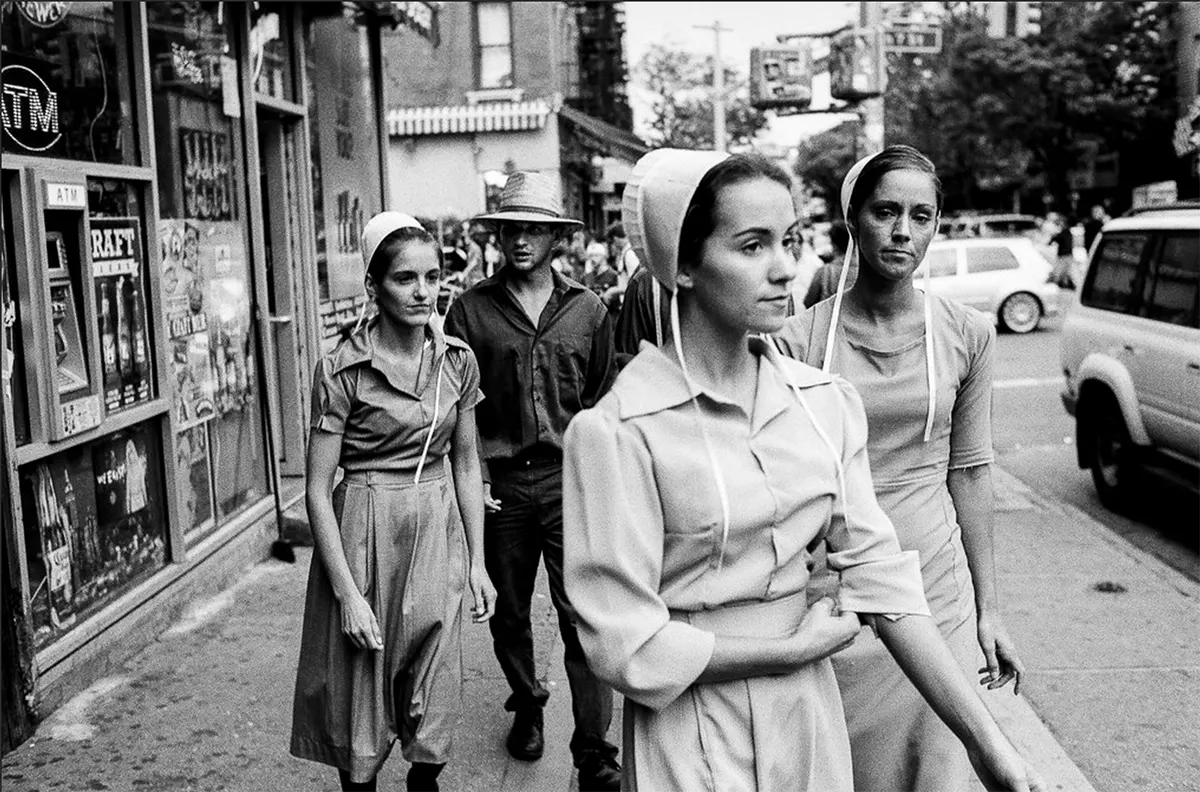
The Evolution of Amish Clothing
Amish clothing, often perceived as unchanging and timeless, has undergone subtle yet significant transformations over the centuries. This evolution reflects both the Amish community’s responses to practical needs and their efforts to maintain cultural integrity amidst a changing world.
17th Century
In the 17th century, when the Amish first separated from other Mennonite communities in Europe, their clothing closely resembled that of the peasant class of the time. Men wore simple trousers and jackets, while women wore plain dresses with aprons. This era marked the beginning of the Amish tradition of simplicity and modesty in attire, influenced heavily by their religious convictions.
18th Century
As the Amish began to migrate to North America in the early 18th century, their clothing adapted to the new environmental conditions. The introduction of more durable fabrics like wool became common, helping them cope with harsher climates. During this period, the distinction between everyday wear and church attire started to blur, with an emphasis on garments that were practical for both settings.
19th Century
The 19th century saw the Amish further define their distinct aesthetic to differentiate themselves from other groups. The use of hooks and eyes instead of buttons (which were seen as too flashy) on garments became more widespread. Women’s bonnets and men’s broad-brimmed hats became symbols of their identity, emphasizing their separation from the ‘worldly’ society.
Early to Mid 20th Century
Throughout the early to mid-20th century, as industrialization swept through North America, the Amish consciously resisted modern influences on their clothing. This era solidified many of the rules regarding fabric types, colors, and styles that are recognized today. The community’s leaders made deliberate choices to avoid synthetic materials and maintain the use of natural fibers like cotton and wool.
Late 20th Century to Early 21st Century
The late 20th and early 21st centuries marked a period of more noticeable adjustments in Amish clothing, primarily driven by practical needs. For instance, reflective vests became a common addition for Amish men driving horse-drawn buggies on public roads, addressing safety concerns while attempting to keep the appearance as minimal as possible. Similarly, adaptations in women’s clothing, such as using snaps hidden under fabric to make dresses easier to wear without compromising modesty, were introduced.
Present Day
Today, while the core principles of modesty and simplicity remain paramount, there is a nuanced approach to how these principles are applied. The Amish may use slightly more colorful fabrics for children’s clothing or adjust adult clothing slightly for practical work-related reasons. However, these changes are always carefully weighed against the community’s values to ensure they do not stray from their cultural and religious foundations.
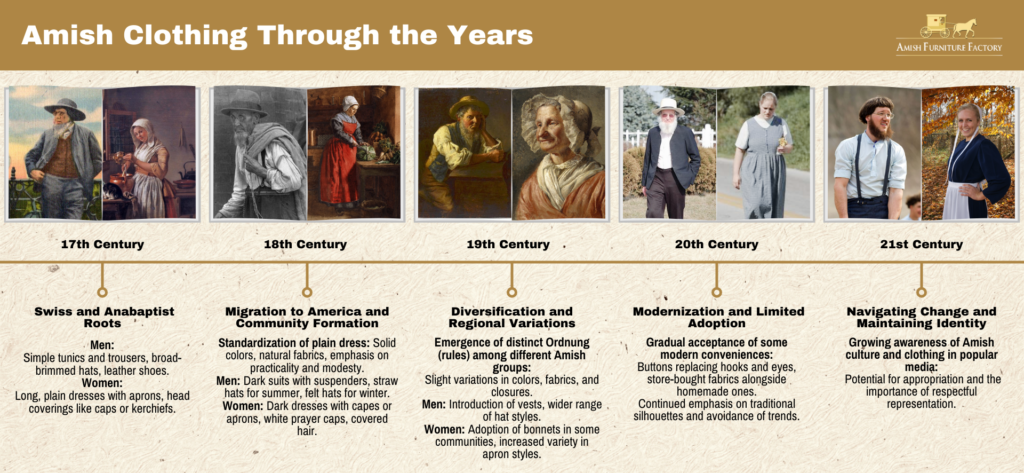
If you look at pictures of some older Amish communities, you’ll see that almost everything has stayed the same in Amish clothing since then; the colors are still somber, no stripes or any design on the fabric, no shoe buckles, no accessories or jewelry, and no ribbons.
If there are any changes, it would be in the type of fabric due to the availability in the market.
Characteristics of Amish Clothing
Amish clothing is not just functional; it embodies the community’s values and traditions. Below, we explore how these characteristics manifest differently in the apparel of men, women, and children within the Amish community.
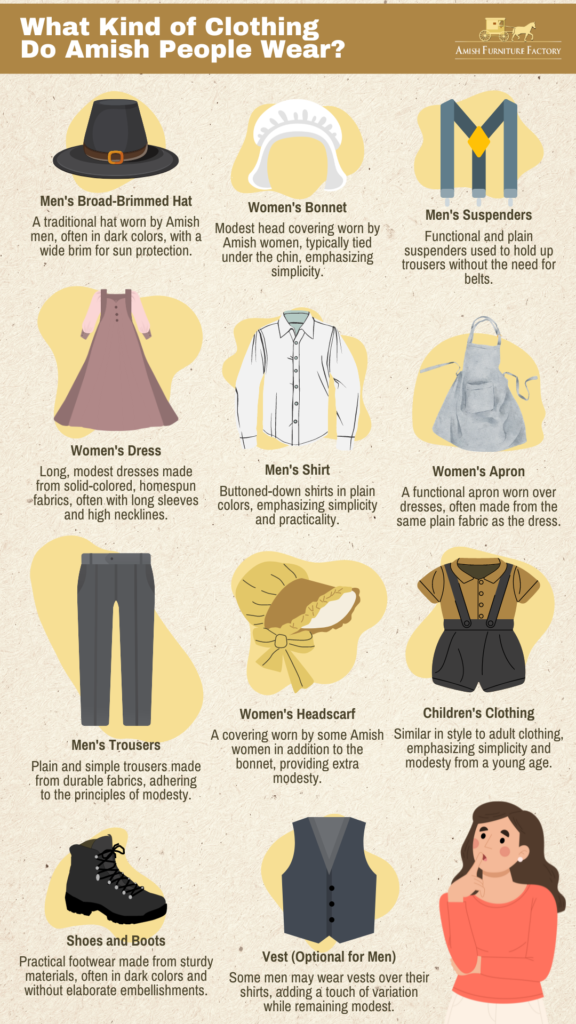
Men’s Apparel
Amish men’s clothing is characterized by its functionality and uniformity. Typically, this includes dark-colored trousers and a plain, buttoned shirt. Suspenders are often worn instead of belts, and during colder months, a simple coat or jacket is common. Hats are customary, with styles varying slightly among communities but always maintaining a traditional look.
Women’s Apparel
Amish women’s apparel is designed for modesty and discretion. Dresses are typically ankle-length with long sleeves and a high neckline, often worn with an apron during daily tasks. The fabric is usually plain or with subtle patterns, adhering to the community’s standards of simplicity. Head coverings, either bonnets or white prayer caps, are an essential part of their attire, symbolizing a woman’s commitment to her faith.
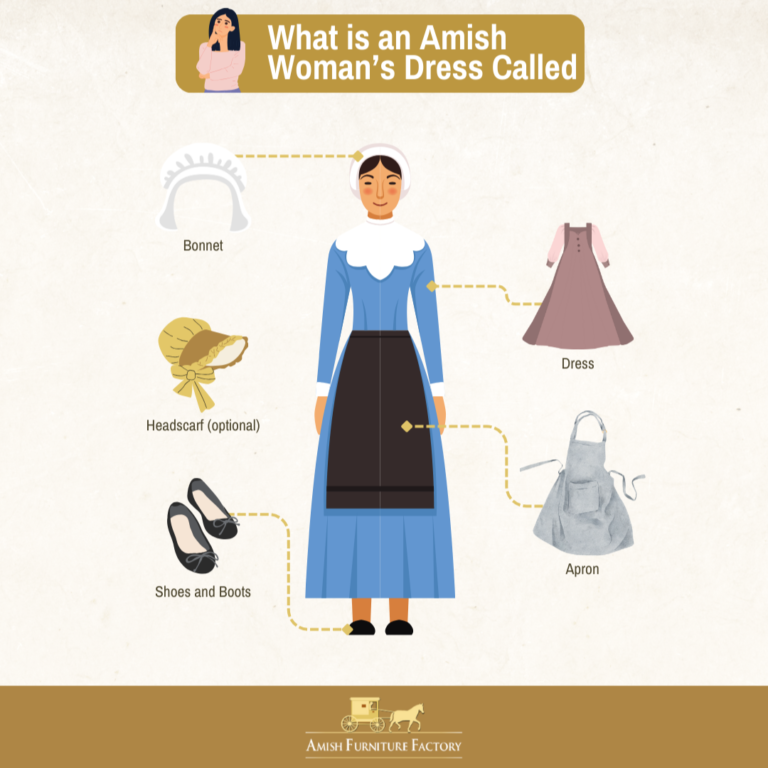
Children’s Clothing
Children’s clothing in the Amish community mirrors the principles seen in adult attire but with slight modifications for age appropriateness. Boys wear scaled-down versions of men’s clothing, and girls wear simpler versions of women’s dresses. The use of color is slightly more lenient for children, although it still remains within a muted palette. This early adoption of the traditional dress code helps instill Amish values from a young age.
Sourcing Amish Clothing
For those interested in Amish clothing, understanding the sources and how they are produced is essential. This includes distinguishing between homemade garments and those available in specialized stores, each offering unique characteristics and origins.
Homemade vs. Store-Bought
Amish clothing is traditionally made at home by the women of the community, using techniques passed down through generations. This homemade aspect ensures that the clothing adheres strictly to the community’s standards of modesty and simplicity. Store-bought Amish clothing, while still conforming to the community’s guidelines, is typically produced on a larger scale and may incorporate more modern sewing techniques. This makes it slightly more accessible to outsiders or younger members of the community who may not have the skills or time to create their own garments.
Specialized Amish Clothing Stores
Specialized Amish clothing stores cater to both the Amish community and tourists interested in their traditional attire. These stores are often located in or near Amish communities and are run by Amish entrepreneurs who ensure that all clothing sold meets the community’s standards. These stores provide an opportunity for non-Amish individuals to purchase authentic Amish clothing and for Amish people to buy items that they may not be able to make themselves, such as specific types of workwear or winter garments.
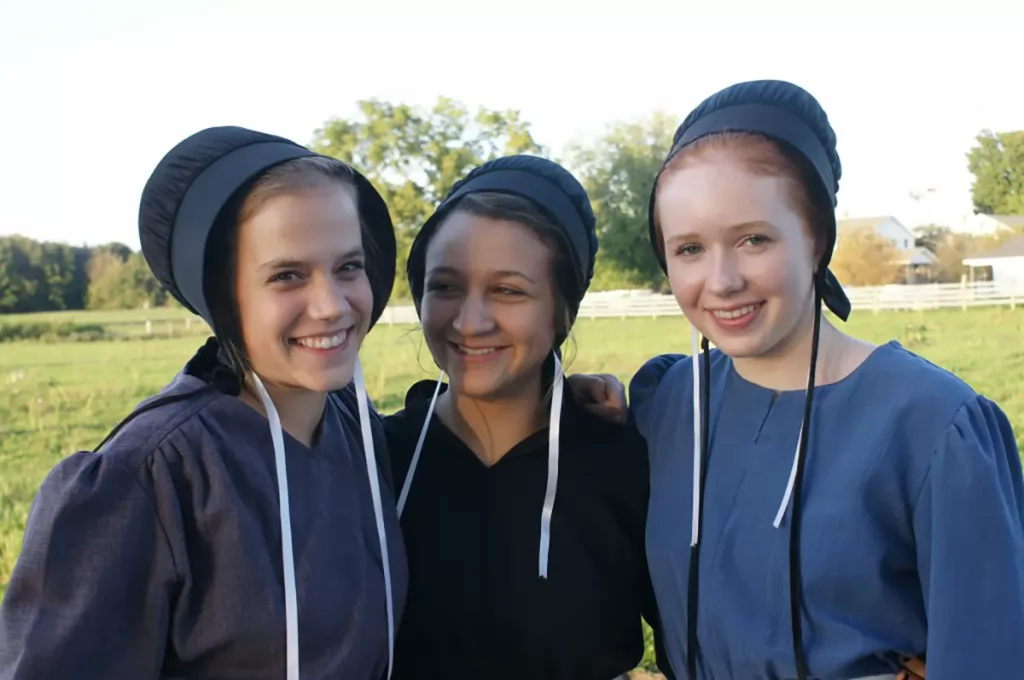
Modern Influences on Amish Fashion
Modern influences on Amish fashion are subtle but significant, reflecting a balance between maintaining traditional values and adapting to contemporary trends. Here are some key areas where modern influences are apparent:
Fabric Choices
While the Amish traditionally use plain fabrics in dark colors, there has been a gradual shift towards incorporating more practical and durable materials influenced by modern manufacturing. For example, tri blend denim and poly/cotton blends are becoming more common for everyday wear because of their durability and ease of maintenance compared to 100% cotton fabrics. These materials are often sourced from the broader fashion industry’s surplus, making them both economical and practical.
Sustainability and Eco-Friendliness
Sustainability is an emerging trend within Amish fashion, mirroring a global shift towards eco-friendly practices. Some Amish designers and seamstresses are focusing on using sustainable fabrics and practices in their clothing production. This includes the use of organic fabrics and natural dyes, aligning with the Amish values of simplicity and environmental stewardship.
Adaptation of Modern Styles
While adhering to modesty and simplicity, some Amish women are subtly adapting modern styles into their clothing. This includes slight changes in the cut and fit of dresses to make them more comfortable and practical. Younger Amish women, in particular, may choose lighter colors and more contemporary cuts for everyday wear, while still adhering to the overall principles of modesty.
Technology and Tools
Even though the Amish reject most modern technology, some communities have cautiously adopted certain tools that aid in clothing production. This includes the use of non-electric sewing machines powered by foot treadles or compressed air. These tools allow for more efficient production without compromising their traditional lifestyle.
Commercial Ventures
The commercialization of Amish-made clothing has introduced some modern influences. Amish seamstresses who sell their products to non-Amish customers often adapt their designs slightly to appeal to a broader market while still maintaining the essence of Amish fashion. This includes offering custom orders that incorporate customer preferences, which can subtly introduce modern elements into traditional designs.

The Role of Clothing in Amish Ceremonies and Rituals
In the Amish community, clothing is crucial in ceremonies and rituals, reflecting their values and beliefs. During key events like baptisms, weddings, and funerals, specific attire is worn to show the importance of the occasion. For example, brides wear a blue dress at weddings, which they will also wear every Sunday, symbolizing modesty and lifelong commitment. At funerals, plain black clothing is worn to emphasize humility and equality.
Ceremonial clothing also signifies an individual’s role and status in these events, reinforcing communal ties and shared beliefs. Baptismal clothing is often simple and handmade, symbolizing entry into the church and a commitment to a life of simplicity and devotion. This traditional attire unifies the community visually and culturally, marking important milestones with deep respect for their ancestral traditions.
An interesting aspect of Amish clothing is its consistency throughout the year, regardless of the weather. They wear the same style of clothing year-round, adapting to the seasons by layering in winter with shawls, capes, or heavier coats, and choosing lighter fabrics in summer. This practice highlights their commitment to simplicity and modesty, avoiding fashion trends and maintaining a uniform appearance that reflects their values.
Challenges and Controversies
Despite the deep-rooted traditions, the Amish community faces challenges and controversies concerning their distinctive clothing. As the outside world evolves, some members, especially the younger generation, feel a tension between traditional dress codes and the convenience or allure of modern clothing. This has sparked internal debates about the degree to which adaptations should be allowed without diluting their cultural identity. Additionally, the increased interest from outsiders has led to the commercialization of Amish-style clothing, which sometimes results in misunderstandings or misrepresentations of the Amish lifestyle.
Another controversy stems from the practical challenges of maintaining traditional clothing styles in a modern world that often does not accommodate such differences. Issues such as safety while using modern machinery or traveling on public roads have prompted the Amish to make small modifications to their attire for practical reasons. These necessary changes occasionally clash with the elders’ desire to maintain purity in adherence to old ways, leading to a delicate balance between safety and tradition within the community.
Reflecting on Tradition: The Significance of Amish Attire
Understanding Amish clothing provides a window into a culture that values modesty, simplicity, and a deep connection to faith and tradition. From their principles of modesty and simplicity to the subtle evolutions over centuries, Amish clothing reflects a unique blend of practicality and symbolism. Each garment tells a story of religious adherence, cultural identity, and communal values.
Amish clothing is much more than fabric and thread; it is a living expression of their beliefs and values. The Amish community’s ability to balance tradition with practical needs demonstrates a resilient culture that continues to thrive in modern times. By respecting and understanding their approach to fashion, we gain insight into a lifestyle that profoundly contrasts with, yet enriches, our own.
FAQs
Can non-Amish people purchase and wear Amish clothing?
Yes, non-Amish people can purchase and wear Amish clothing. Specialized Amish stores, including those online, often sell traditional Amish garments to anyone interested. However, it’s important to wear these clothes respectfully, understanding that they are deeply tied to the Amish culture and beliefs.
How do Amish communities view the modernization of their traditional attire?
Amish communities generally view the modernization of their attire cautiously. While practical adjustments are sometimes made to accommodate safety or work-related needs, any change is carefully considered to ensure it does not compromise their values of simplicity and modesty. The community leaders often weigh these decisions to maintain a balance that respects tradition while addressing practical concerns.
Are there specific colors or fabrics that are preferred in Amish clothing?
Amish clothing typically features solid, dark colors such as black, blue, green, or purple, which align with their values of modesty and simplicity. Preferred fabrics are those that are natural and durable, like cotton and wool. These materials are chosen for their practicality and comfort, reflecting the Amish commitment to a simple, unadorned lifestyle.
